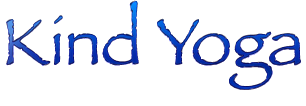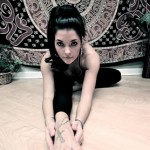For Accepted Students
“Our own brain, our own heart is our temple: the philosophy is kindness.” The Dalai Lama
As a National Yoga Alliance approved training, the Kind Yoga 200 Hour curriculum is divided into five categories:
Techniques, Teaching, Anatomy, Philosophy, and Practicum
“This is a must for all.. A beautiful life style shift will illuminate from within you. The skills you will learn from this training will give you the tools, and lifetime skills to handle or deal with anything that life brings your way. You will have the skills to control the stress, not the stress controlling you or your health. Namaste” Kathleen Viola, Hyannisport, MA
“As layoffs loom and pensions plummet, more people are unrolling their yoga mats and polishing their poses to find flexibility and sanity amid the financial chaos. Yoga Classes are thriving.” Reuters.
1) Yoga Techniques Training/Practice 100 hours
- Yoga Asana Over 45 foundational postures will be presented ~ analytical training and guided practice, including alignment principles, modifications when necessary, assisting, contra-indications, and benefits
Standing:
1. Tadasana: Mountain
2. Trikonasana: Triangle
3. Parsvakonasana: Sideways stretch, lateral angle
4. Prasarita Padottanasana: Wide leg for. bend
5. Virabadrasana I
6. Virabadrasana II
7. Virabadrasana III
8. Dancing/Reversed: Warrior posture
9. Uttanasana: Standing forward bend
10. Utkatasana: Half squat, chair, and chair twist
11. Ardha Chandrasana: half moon demonstrated here by my friends devarshi and jovinna
12. Deviasana: Goddess - Balancing:
13. Vrksasana: Tree pose, Ardha Chandrasana: balance ½ moon
14. Garudasana: Eagle - Inversions:
15. Sarvangasana: Shoulderstand
16. Setu bandhasana: Bridge pose (also a backbend)
17. Ado Mukha Svanasana: Downward facing dog, and variations: on wall, Dolphin pose - Backbends:
18. Ustrasana: Camel,
19. Matsyasana: Fish posture,
20. Shalabhasana: Locust, + Navasana: Downward Boat
21. Dhanurasana: Bow and another
22. Urdhva Mukha Svanasana: Upward facing dog
23. Bhujanghasana: Cobra + Sphinx
24. Kapotasana: Pigeon, - Forward bends:
25. Paschimottanasana: Sitting forward bend,
26. Janusirsasana: One leg head to knee forward bend,
27. Garbhasasana: Childs pose, (aka Balasana)
28. Yoga Mudra: seal of yoga,
Sitting:
29. Dandasana: Staff pose,
30. Baddha Konasana: bound angle butterfly
31. Siddhasana: Perfect posture, crossed legs or Easy posture
32. Navasana: (Upward) Boat posture,
33. Lotus: padmasana and variations
34. Gomukasana: Cow face posture (aka face of light)
35. Simhasana: Lion posture
36. Seated Side Bend or Parighasana: Gate - Twists:
37. Ardha Matsyendrasana: Seated twist, my friend Jill Abraham teaches seated twist at our free yoga class in Hyannis town green
38. Jathara Parivartanasana: Knee Down Twist, - Stabilization:
39. Marjariasana, Table, Cat:,
40. Chaturanga dandasana, Plank,
41. Chakravakasana, Sun Bird, - Supine:
42. Apanasana: Knee to chest
43. Purvottanasana, Supine plank,
44. Vipararita Karani: Legs up the wall
45. Ananda Balasana: Happy baby - Sun Salutation and Moon Salutation and other yoga flows
- Relaxation – Savasana, Yoga Nidra
- Pranayama – The theory and practice of Yogic breathing and energy. 5 Breathing Practices are covered. Here is an example of Ujjayi Breath, taught by my friend Jovinna Chan
- Meditation – Five Practices of meditation encompassing a variety of styles are presented and practiced
- Mudras – The study of energetic seals – Diane demos 5 mudras here.
- Developing a Personal Practice – teaching derives first from one’s own practice. The foundation of the Kind Yoga program emphasizes deepening one’s personal practice. Students are strongly encouraged to maintain a regular practice of at least two classes per week and home yoga practice outside of the core program.
- Class Design includes presentation: Develop a series of 4 classes in your area of interest
- Alignment Principles , assists
2) Teaching Methodology – 25 hours
- Business, teaching styles, assisting, language of teaching, principles of demonstration, qualities of a teacher, learning styles (auditory, kinesthetic, visual) class outlines, observation
3) Anatomy and Physiology 20 hours
- Bones, joints, and the skeleton
- Muscles, organs, movement and posture, safety
- Subtle anatomy – the Chakras, Koshas
- Understand contraindications for certain postures and breathing techniques
- Diane and Patty Fater MD lead an “anatomy relaxation” learn while you relax!
4) Yoga Philosophy and Ethics 30 hours
- Yama and Niyama overview
- Patanjali’s Yoga Sutras
- Ethics for Yoga teachers
5) Practicum 25 hours
- Practice teaching: Develop confidence as a yoga teacher through an integrated program of practice teaching. Keeping a weekly journal of your observations, feedback from others, insights, new learning, observation of yoga classes attended, observations of meditations and personal practice. Observing others teach, Receiving, providing, and listening to other’s feedback (teachers and students)
“Let us be at peace with our bodies and our minds” Thich Nhat Hanh
“Our scientific power has outrun our spiritual power. We have guided missiles and misguided men. Our hope for creative living lies in our ability to reestablish the spiritual needs of our lives in personal character and social justice. Without this spiritual and moral reawakening we shall destroy ourselves in the misuse of our own instruments.” Rev. Martin Luther King Jr.

